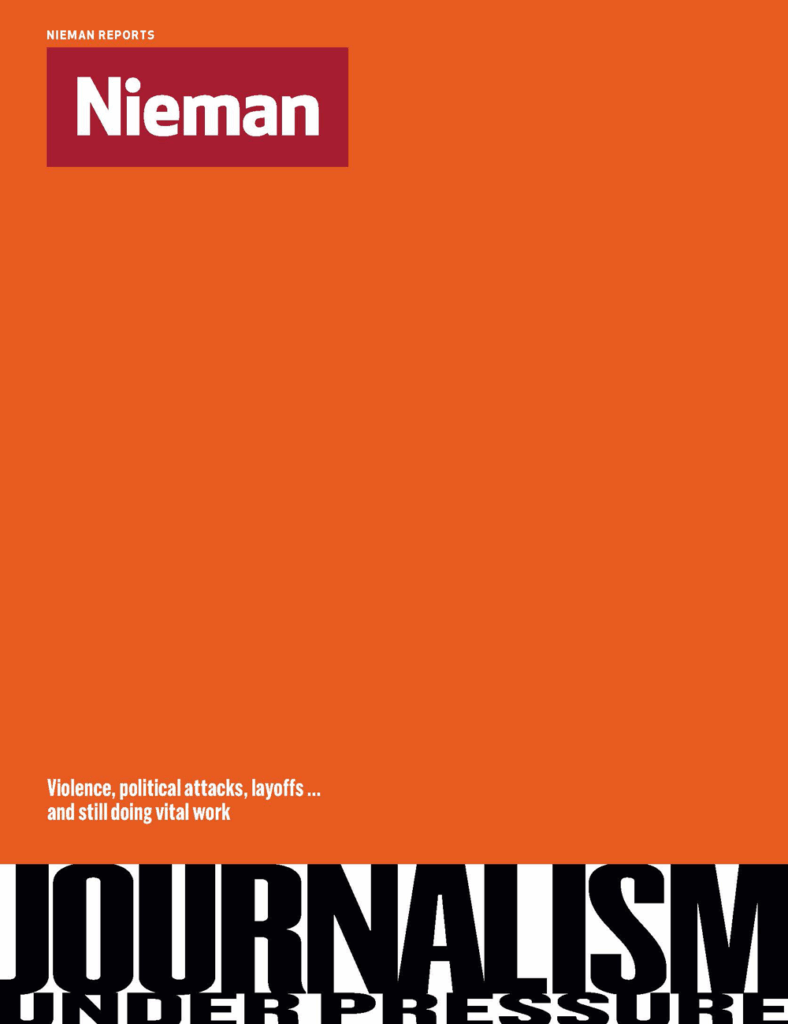On February 26, 2018, Slovak investigative journalist Marek Vagovič rushed through the morning traffic of Bratislava. Early that morning his boss, Peter Bárdy, editor in chief of online news portal Aktuality.sk, summoned him to the office for an urgent meeting. He didn’t explain why.
Sitting in his car, parked in front of the office complex, Vagovič received a text from a friend. A young couple was reportedly murdered in Vel’ká Mača, a small town about 40 miles from Bratislava. Vagovič, a veteran reporter, who has dedicated the last two decades to untangling stories of corruption and blurred lines between business and politics in Slovakia, quickly figured out that one of the victims was a member of his investigative team, 27-year-old Ján Kuciak.
“I was paralyzed,” recalls Vagovič, who recruited Kuciak to Aktuality two years before.
Ján Kuciak was a rising star of the investigative team. He was shot dead at home, together with his fiancée Martina Kušnírová, just a few days before Aktuality planned to run his year-long investigation about the activities of Italian criminal organization ‘Ndrangheta in Slovakia. The piece raised questions about high-level political corruption in Slovakia, suggesting links between the local mafia and senior politicians of the Slovak governing party Smer (Direction/Social Democracy).
Now, months after the initial shock, sitting in a conference room adjacent to Aktuality’s newsroom, Vagovič is still coming to terms with what happened: “Such a thing affects you until the end of your life. All of us will forever think about what we could have done differently, how we could have boosted security.”
Kuciak’s bosses had offered to take measures to ensure his safety before publishing the explosive article. But, according to Vagovič, the young journalist had declined: “He thought that there was no special threat, that we lived in a civilized country and something like that wouldn’t happen. Well, we all were wrong.”
Slovakia and its neighbors—the Czech Republic, Poland, and Hungary—have seen worrying trends in journalism for years
Kuciak’s murder was the first killing of a journalist in Slovakia in its modern history. And it left the country shaken, along with the rest of Central Europe. Slovakia and its neighbors—the Czech Republic, Poland, and Hungary—have seen worrying trends in journalism for years.
In May 2017, Czech President Miloš Zeman called for journalists to be “liquidated” while standing next to Russian President Vladimir Putin. In November 2016, former Slovak Prime Minister Robert Fico denounced journalists as “dirty anti-Slovak prostitutes.” In January 2016, Poland’s conservative government introduced a new media bill that effectively secured its control over state broadcasters. Months later mass protests forced the same government to scrap another proposal attempting to limit the number of reporters allowed to cover the Polish parliament. In addition to Poland, there have been government attempts to control public media in Hungary and Slovakia, and the “oligarchization”—acquisitions by wealthy businessmen—of leading media houses throughout the region.
“The traditionally safe environment for journalists in Europe has begun to deteriorate,” concluded Reporters Without Borders (RSF) in its 2018 annual report.
According to RSF, the sinister trend is not exclusive to Central Europe. In October 2017, just a few months before Kuciak’s killing, Maltese investigative journalist Daphne Caruana Galizia was murdered close to her home by a remotely detonated car bomb. In Italy and Bulgaria reporters have been attacked and received death threats from criminal groups. Politicians in Austria, France, and the United Kingdom have labeled the press an opponent or accused media covering critical stories of spreading lies. Countries across Europe report a rise in hate speech targeted at journalists. RSF notes government interference and attempts to change the legal framework for financing public media not only in Hungary, Slovakia, and Poland but also in countries like Switzerland, Spain, and Montenegro.
These trends—the ascent of populist leaders, rise of isolationism, nationalistic rhetoric, right-wing extremism, hatred toward minorities, and attacks against the press—are the same around the world, be it Manila, Washington, or Budapest. In Central Europe, a massive change in media ownership after the financial crisis of 2008-2009 was an important catalyst in bringing about these threats to the free press.
Against the backdrop of the crisis and collapsing business models, media owners fled the sector and, in the case of foreign owners, the region as a whole, according to Václav Štětka, researcher and lecturer in Communication and Media Studies at Loughborough University in the U.K. The ownership vacuum was quickly filled by the only people with money at the time: rich businessmen who amassed wealth in the 1990s during the messy transformation from Communist to market economies. Often, those were people with close ties to senior politicians.
In Central Europe, a massive change in media ownership after the financial crisis of 2008-2009 was an important catalyst in bringing about threats to the free press
In Hungary, for example, oligarch Lájos Simicska, a longtime friend of Hungarian Prime Minister Viktor Orbán, created a vast media empire credited with paving the way with its positive coverage for Orbán’s election victory in 2010. In 2015, after a public fight between the two men, Simicska’s media started publishing critical stories about the government, and the influential businessman decided to support the Hungarian opposition. Three years later, after another Orbán election victory, Simicska sold all of his assets, and his media group returned to the pro-government camp.
Close ties between business and politics play an important role in the ability of governments to control media. Market size also plays a role. Poland is a market of almost 40 million people, while the Czech Republic and Hungary have populations of 10 million and Slovakia only 5 million. The markets are distinct in structure, too. There are strong public media in the Czech Republic, but traditionally much weaker public media in Poland, Slovakia, and Hungary. Historically, Poland has had a strong print media; the other countries, not so much. Across the four countries the level of domestic and foreign investment varies.
What follows is a consideration of the challenges and opportunities for the free press in each of the four countries.
Hungary
Currently ranked “partly free” by Freedom House’s press freedom index and 73rd in the Reporters Without Borders 2018 press freedom list (down from 23rd in 2008), Hungary has experienced the steepest fall of all Central European countries. “It’s deteriorating at a very fast pace,” says Márton Gergely, an editor at Hungary’s current affairs weekly HVG. “In the last two years, the situation worsened at a speed I could never have imagined.”
Until three years ago, Gergely was deputy editor in chief of Hungary’s once most read—and now defunct—broadsheet, Népszabadság (“People’s Freedom”), a left-leaning daily founded as a Communist party organ during the 1956 Hungarian uprising against the regime. The paper, which was privatized in 1990 and became the country’s number one political daily, was abruptly closed by its new owners in 2016. Financial losses were cited as the reason at the time, although employees were convinced that the daily was shut down because of articles critical of right-wing Prime Minister Viktor Orbán. The paper, which opposed Orbán’s anti-refugee sentiment, was shut down just days after it had broken stories of alleged corruption involving senior government officials.
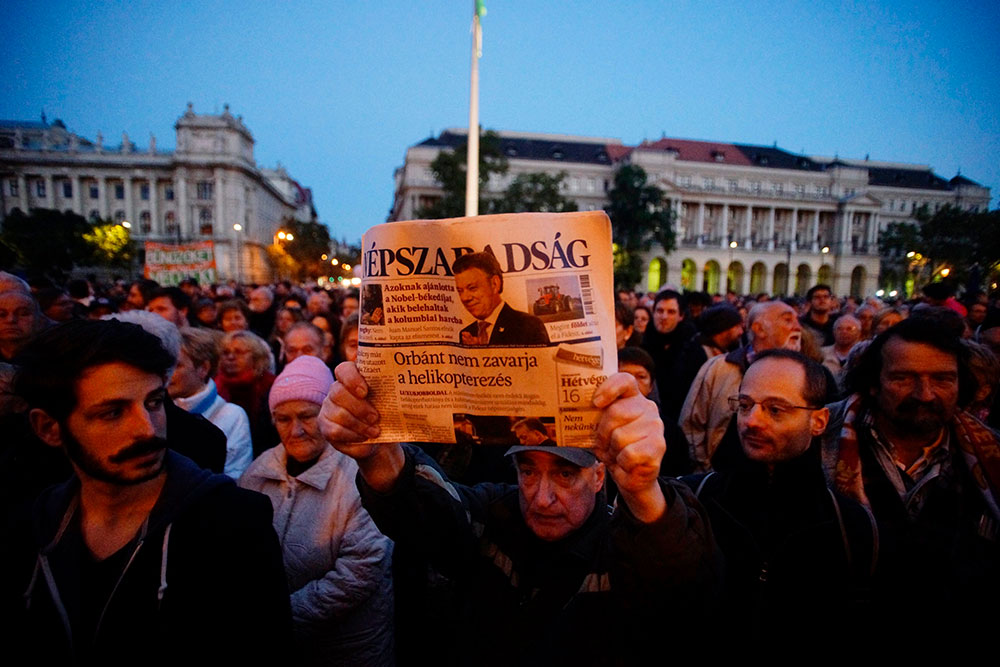
The story of Népszabadság’s closure is, according to experts, one example of how since 2010 the government of Viktor Orbán and his Fidesz party has slowly taken Hungarian media under almost total control. One of the first measures of Orbán’s government was to set up a special body, the Media Council, which oversees all media output and has powers to sanction organizations for breaking the rules, which include providing “balanced” news content. The council members are named by the parliament, where Orbán’s party has a supermajority. It also controls the public media, where government anti-immigrant and anti-E.U. policies have been given increasingly more space, unchallenged by critics.
Private media, often struggling financially, have been bought up by new owners. Formerly independent outlets critical of the government, such as commercial television channel TV2, changed coverage to almost exclusively positive. Origo, once the most-read news portal in Hungary, known for its investigative stories, now rails against migration and anti-Hungarian conspiracies, favorite government talking points.
TV2 and Origo are among the top 10 publishers receiving government advertising, according to investigative website Atlatszo. Over the last eight years, the Hungarian government spent almost $250 million on advertising and communication campaigns, mostly sending anti-immigration and anti-E.U. messages, the portal claims. The media organizations and advertising companies receiving this money are owned by businessmen with close ties to the government.
In November of last year, the owners of the majority of pro-government media in Hungary formed a conglomerate, the Central European Press and Media Foundation, which will run more than 470 outlets across the country as a nonprofit. The conglomerate covers newspapers, TV channels, radio stations, online portals, and local papers. It is led by Orbán loyalists formerly affiliated with the prime minister personally, connected to his political party, or supportive organizations.
“The government created its own media ecosystem,” says András Pethő, senior editor and co-founder of Direkt36, a nonprofit investigative news platform he and former colleagues from Origo founded after becoming disillusioned by the political pressures on the news portal. By the spring of 2018, in time for the parliamentary elections, “you could see that they were not producing journalism. They were pushing the agenda of the government. It was all about George Soros, migrants, attacking the opposition. Even the language was very similar to the language of the politicians.” Soros, an American billionaire investor of Hungarian origin, is targeted by Orban’s nationalist government for supporting refugees and other philanthropic projects. Central European University, founded by Soros, was forced out of Hungary.
In April 2018, shortly after the parliamentary elections, the British paper The Guardian spoke to several employees of the state-funded MTVA network, who admitted amplifying government messaging and even airing false stories in an attempt to push through the government’s anti-immigrant agenda.
Direkt36 is one of the few media outlets in Hungary attempting to hold the government accountable. The startup publishes investigative stories on corruption and ties between Orbán’s family and influential businessmen. It is also part of international investigations, such as the Panama Papers. In 2016 Direkt36 published a series of articles about the hidden assets of Hungarian parliament members and other political officials. Recently it delved into circumstances around the fall of Lájos Simicska.
The story of Népszabadság’s closure is one example of how the government of Viktor Orbán has slowly taken Hungarian media under almost total control
In a highly polarized environment, trust in news in Hungary is low, at only 29 percent, according to the 2018 Digital News Report by the Reuters Institute for the Study of Journalism. Recent changes in media, along with new labor legislation, sparked a fresh wave of discontent among the public. In mid-December 2018 thousands of Hungarians protested at the state television headquarters and demanded independent public media and government accountability.
With only 8 percent of consumers willing to pay for content, though, small nonprofit startups, such as Atlatszo or Direkt36, have to be inventive in attempts to approach their audience. “We have a pretty good reach. But it’s getting more and more difficult. There are fewer and fewer outlets who could pick up our stories and bring them to their audience, which is obviously a problem,” says Pethő.
Pethő believes Direkt36’s business model, which is based on grants, private donations, and increasingly on crowdfunding, is sustainable. “We try to offer something in return, in the form of exclusive content,” he says. “We are trying to build a community. We have a special newsletter for our supporters. We publish e-books, organize events and workshops.” Since 2015 about 3,000 people have donated to Direkt36, according to Pethő, and almost half of the startup’s expenses were covered by money raised by crowdfunding. “I’m afraid that if we’re going to talk again in four years, the situation will be even worse,” he says. “There is no nicer way to put it.”
Slovakia
Some 120 miles northwest of Budapest, in the Slovak capital Bratislava, the mood is not much brighter.
Beata Balogová, editor in chief of SME, the main broadsheet in Slovakia, is increasingly worried about the spillover effect. “Developments in Hungary are so concerning and serve as such an inspiration to politicians in other countries,” says Balogová, who also serves as a vice-chair of the International Press Institute, an organization promoting press freedom and the improvement of journalism standards across the world.
Kuciak’s murder has led to an otherwise unlikely situation: close cooperation among competitors. Leading papers, portals, and TV channels—Aktuality, Trend, Denník N, SME, public TV and commercial channels Markíza and JOJ—joined efforts and shared their reporting on the case.
In March 2018, mass anti-corruption protests brought down the government of then Prime Minister and head of the political party Smer, Robert Fico, who had been criticized for cultivating a culture of corruption, cronyism, and clientelism. By September 2018, the Slovak police had confirmed that Kuciak’s journalism was the reason the couple was shot. Four people were arrested and charged with “premeditated murder and other crimes.”
Slovakia, too, has experienced a decline of public trust in media in recent years. To many in the country, however, the murder highlighted the importance of independent journalism. “Already before the murder, investigations of our team and especially Ján Kuciak’s pieces were well regarded. But after his death the interest spiked sharply,” says Vagovič of Aktuality.sk, part of Ringier Axel Springer publishing house. “People trust us much more now. It’s been apparent from the numbers [of read articles], engagement, reactions to our texts.”
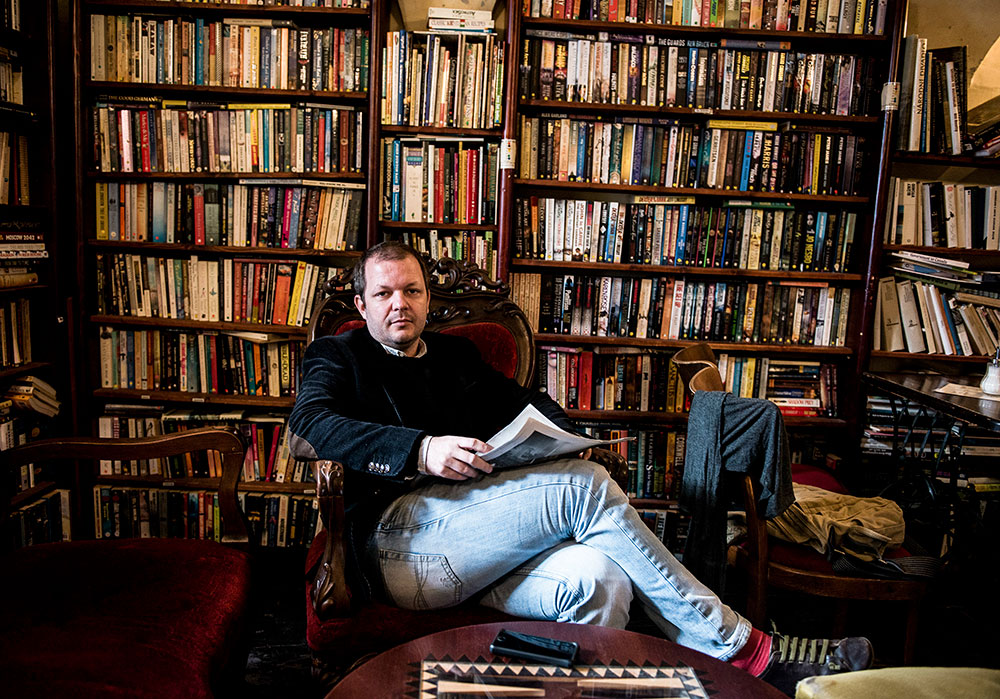
His investigative unit felt a direct impact: What used to be a team of three reporters is now a group of 10 writers publishing a new piece every day. The news portal continues to publish stories of developments in the police investigation of Kuciak’s murder. According to Reuters’ Digital News Report, Aktuality.sk was in 2018 the second most used online news source in Slovakia. It has more than 2 million monthly users. Since September the portal introduced a “soft version” of a paywall—while the content remains free, its readers can contribute about $5 monthly to support the investigative team. The subscribers are offered various benefits—such as a newly published and highly anticipated book about Kuciak and his stories.
Denník N, one of the most successful media startups in Slovakia and perhaps all of Central Europe, has also seen a steady increase of public support. It was founded in 2014 after almost two dozen journalists—including editor Matúš Kostolný—left the most important Slovak broadsheet, SME, in a protest over powerful investment group Penta’s entry into the ownership structure. Penta was involved in several political scandals, including the so-called “Gorilla Scandal” in 2012, which alleged widespread bribery of officials in return for winning lucrative public-procurement and privatization contracts.
Denník N’s success is also due to the fact that it put its stories behind a paywall right from the start. “People got used to paying for content,” says Kostolný, who is now Denník N’s editor in chief. Over the past four years, at least 100,000 users bought subscriptions. Kostolný is convinced that the mental barrier of having to pay for online journalism is gradually cracking. He considers the subscription model an important condition for keeping media independent: “If we want to convince people that they should make a long-term investment in us, we need to be skillful and able to produce good journalism.”
Public broadcasting may be the next battlefield. RTVS, Slovakia’s public radio and TV broadcaster, is increasingly conforming to the government, according to observers and its former journalists. In May 2018, several leading reporters and editors were forced to leave or left the company in protest against alleged management misconduct. That same month, dozens of Slovak journalists published an open letter raising concerns over the leadership: “The new management of RTVS is bullying, pressuring and firing its longtime journalists, who in the last few years contributed to restoring public trust in the public media.”
Kuciak’s murder has led to an otherwise unlikely situation: close cooperation among competitors
“Our concern was first sparked when experienced journalists leading the news were replaced by former government spokespeople who were clearly in a conflict of interest,” says Matúš Dávid, a former foreign desk editor who spent five years in RTVS television broadcasting. In January 2018 RTVS management decided to shut down the only investigative program it had. The open letter signed by 60 RTVS journalists described an atmosphere of fear and voiced concern over attempts to push a political agenda in the news. RTVS management defended its decisions and promised to revive the investigative show. But concerns linger.
“No one stood above my desk to direct me what to say. But that’s not the point,” says Dávid. Loss of independence, he says, can be achieved in other ways: using false equivalency of opinion in news pieces, combining facts with speculation, inviting in the role of trusted experts analysts who are known for disseminating Russian propaganda or spreading conspiracy theories. “All we tried is to tell them that it’s not possible to balance the truth with lies.”
Czech Republic
In the Czech Republic media ownership concentration has had a negative effect, though it also has been linked to a record number of media startups in all segments of the market—online, video, TV, print, investigative journalism.
In 2013, Andrej Babiš, a billionaire businessman who was appointed prime minister after he and his party won the general elections in 2017, obtained control over the second biggest paper in the country, Mladá fronta DNES, news portal iDNES.cz (with 4 million monthly users), and another broadsheet, Lidové noviny. Four months after his purchase of the MAFRA publishing house, Babiš, running on an anti-corruption platform, won a seat in the Czech parliament. His political party joined the government coalition, and Babiš himself became finance minister. Today Babiš owns through his companies two dozen publications, a national radio station, and a couple of small television stations.
Babiš is just one of a number of Czech businessmen who are new owners of important media outlets, all of whom deny seeking influence through their assets. In 2017, a leaked tape suggested otherwise. In the recording, Babiš discussed coverage of his opponents with a journalist from his own paper. That might not be a direct proof of editorial meddling, but according to Reuters’ 2018 Digital News Report, such behavior contributes to the public’s declining trust in news media.
The question for the new Czech outlets is, how financially sustainable will they be? Deník N, a Czech version of the successful Slovak subscription-based news outlet, launched in October 2018. According to editor-in-chief Pavel Tomášek, the team got an initial investment from the Institute of Independent Journalism, a Czech nonprofit. But it also won financial support from its prospective audience. Before it published a single story, Deník N had raised over $300,000 in a crowdfunding campaign and registered 5,000 subscribers. Its plan is to reach 20,000 subscribers and become profitable within four years. The news portal, which also started selling daily print copies in January, is seen as a test of Czech audience’s willingness to pay for content—many of Deník N’s online stories are behind a paywall.
In 2018 Seznam.cz, the longtime number one Czech news site, expanded its activities and launched its own TV news channel, Seznam Zprávy. In November 2018, Seznam ran a story about Prime Minister Babiš’s son, Andrej Jr., who claimed he was forced to travel to Crimea in an attempt to avoid police questioning connected to his father’s business activities.
The question for the new Czech outlets is, how financially sustainable will they be?
The story sparked a debate about journalism and ethics. Critics questioned the Seznam reporters’ decision to use a hidden camera and a slightly sensational tone in the piece. The debate pointed also to another issue in journalism: increased polarization.
“There is less and less classic news reporting,” says Pavla Holcová, editor of the Czech Centre for Investigative Journalism and a member of Organized Crime and Corruption Reporting Project. “Czech journalism is dominated by commentary. The question is why is it happening. Sometimes it feels like in the tense competition, journalists think that their stories need to be more polarized to catch the attention of the audience.”
While Czech public media remain among the most trusted outlets in the country, they face challenges, too. In 2014, Jan Rozkošný and three other members of a team producing a respected evening current affairs show on Czech TV, left the public broadcaster after one of the show’s top presenters was removed from the program. Rozkošný and his co-workers suspected that political pressure on TV management was behind the maneuver, although the organization’s editorial leadership denied it. The journalists who left the program founded DVTV, a small media organization producing video current affairs show on demand. It quickly became successful and now supplies videotaped interviews, live debates, comments, and reports to Aktualne.cz, one of the largest Czech online portals.
Tough questions combined with rich presenting skills earned DVTV frequent criticism from politicians, notably from Prime Minister Babiš, who refuses to give it interviews or answer questions from its journalists during press conferences. The style is welcomed by the audiences, though. In 2015 the startup raised almost $100,000 within a single month. “The problem is trust,” says Rozkošný. “To me, that’s more troubling than media fragmentation.”
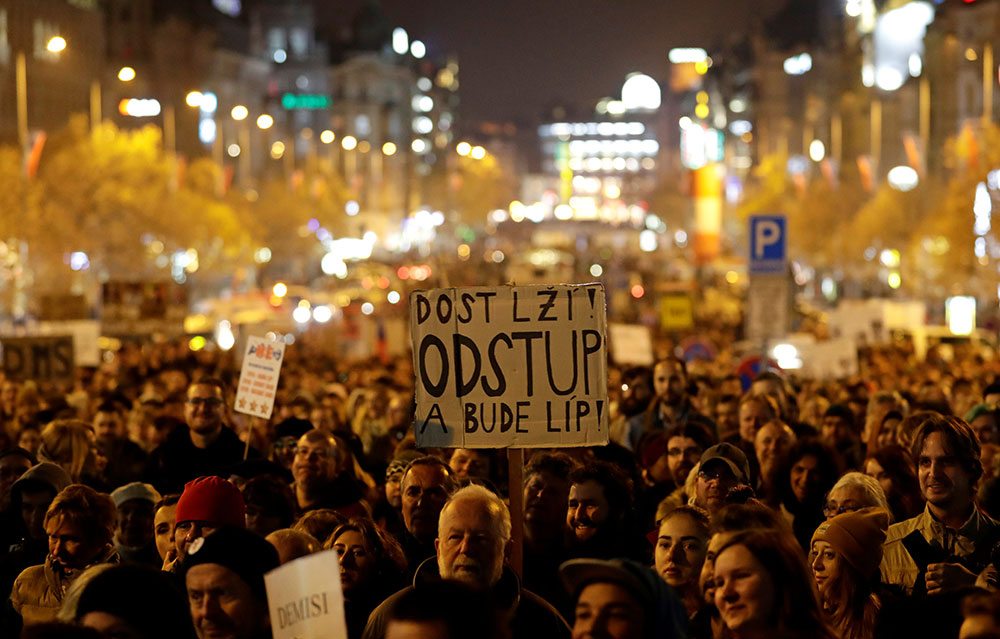
Both Czech public broadcasters face criticism for efforts to distribute air and screen time equally to all political parties, including fringe and extremist voices, and confusing objectivity with a false equivalence. “Public TV and radio are today the crucial sphere where the fight over the future of media in Central Europe is going on,” says Jacques Rupnik, professor of political science at Sciences Po in France. “Public media is supposed to guarantee the public debate, but suddenly they are under the pressure of powerful forces.”
Poland
In early December 2018, Gazeta Wyborcza, Poland’s most widely circulated broadsheet and, since 1989, a model of journalism in Central Europe, published a list of 19 lawsuits. All of them, the paper explained, have been brought in recent years against it by the governing party, PiS (Law and Justice), and institutions it controls. The Polish National Bank wants several articles removed from Gazeta Wyborcza and Polish Newsweek, part of an investigation into corruption involving the president of the bank. The paper faced lawsuits from the Justice Department, from Polish public television broadcaster TVP, from the governing party and its members—all disputing critical articles raising questions around how Polish taxpayers’ money was spent and other issues.
Roman Imielski, national editor at Gazeta Wyborcza, says: “They want to force us to self-censor. The second problem is money. We must hire lawyers; we must defend ourselves in the courts.”
Since taking over the government in 2015, the Law and Justice party has introduced measures to consolidate the media. National TV and radio broadcasters, TVP and Polskie Radio, and Polish press agency PAP are practically controlled by the state. More than 200 journalists were forced to leave or were fired, and government spokespeople or individuals with close ties to the ruling party were put in charge. “The focus was always on television, because it has the highest reach and, they believe, the highest influence on the voters, especially those who voted for the populist nationalist government,” explains Grzegorz Piechota, a senior visiting research fellow at the Reuters Institute for the Study for Journalism.
In Poland, it is small news organizations that are most vulnerable to growing hostility from authorities
Today, the Polish government also targets private media. “They step up both direct intimidation and financial pressure. State-owned institutions and companies that do business with the government are reluctant to advertise in media that the government sees as an opposition,” says Piechota. Companies like Gazeta Wyborcza, Agora publishing house, commercial TV channel TVN, and Ringier Axel Springer publishing house (owner of the Polish Newsweek) have suffered a loss of advertising. Media supportive of the government wins contracts with state-owned clients.
The PiS campaign against foreign-owned media recently prompted a diplomatic spat with the U.S. ambassador in Warsaw Georgette Mosbacher. In a private letter to Polish Prime Minister Mateusz Morawiecki, the ambassador voiced concerns over attacks against private television channel TVN. The company, which is owned by American media group Discovery, remains one of the few independent sources of news in the Polish TV world. After TVN broadcast an investigative piece about a neo-Nazi gathering in the south of the country, law enforcement showed up at the house of the cameraman and Polish authorities charged him with promoting Nazi propaganda.
TVN remains the most widely watched independent TV channel, at a time when all television outlets in the country report an annual loss of viewers, according to the 2018 Digital News Report from the Reuters Institute for the Study of Journalism. Journalists from TVN’s news station TVN24 infiltrated the neo-Nazi group and worked undercover. Their video footage showed members dressed in Nazi uniforms, gathering to celebrate Adolf Hitler’s birthday with a cake decorated with a swastika and the colors of the Third Reich. The documentary triggered a discussion about the rise of Polish far-right groups and the response of the current right-wing government, which critics blame for overlooking the problem. TVN’s management insists the piece was created “in accordance with the standards of investigative journalism” and said it would consider treatment of their cameraman by Polish prosecutors as intimidation. It’s not the channel’s first run-in with authorities under the PiS government. In 2017 TVN was ordered to pay a fine of $415,000 for its coverage of December 2016 anti-government protests, which the Polish media regulator found “promoting illegal activities and encouraging behavior that threatens security.” The fine was later silently withdrawn, after the U.S. government raised concerns on behalf of the American owners of TVN.
In response, news startups are emerging in Poland, too. Outlets like Outriders, VSquare, and NewsMavens are exploring a variety of funding models, from subscriptions, crowdfunding, and advertising to grants and alternative revenue sources, such as offering writing services to nonprofit organizations. Outriders, an online magazine published in Polish and English, is dedicated to international affairs and exploring interactive forms of presentation. Its ambition is to offer its readers deeper context surrounding global affairs and improve journalism through a debate led by a network of international reporters and writers. VSquare is a platform uniting investigative media from the Visegrad region—Poland, the Czech Republic, Slovakia, and Hungary. Since 2017 the site has been publishing stories about Central European countries, often created in cross-border collaboration. NewsMavens positions itself as an alternative to both traditional and new media—it presents the latest news from Europe exclusively as seen through female journalists’ eyes. Women choose and recommend stories they consider newsworthy, in an attempt to break through the limits of European newsrooms—according to the website, women hold only 27 percent of top management jobs.
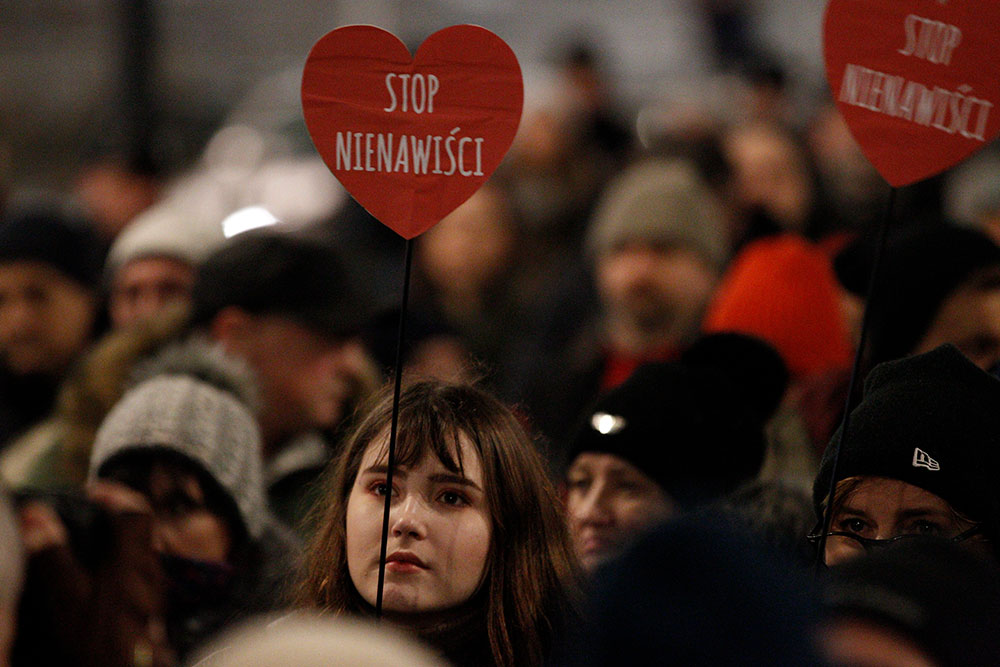
Sites that were started mostly as email platforms and news aggregators, such as Onet and Wirtualna Polska, are stepping up their original journalism efforts. OKO.press, a fact-checking and investigative site, launched in 2016 with initial funding from Agora, the publisher of Gazeta Wyborcza, and Polityka, the largest liberal weekly in Poland, is self-sustaining. The bulk of the roughly $50,000 monthly budget comes from private donations of OKO’s readers; the rest is a combination of revenue from grants and crowdfunding campaigns. In a section titled “Truth or lie,” OKO.press monitors statements by politicians, state and church officials and provides facts, background, and context. It publishes original investigative stories as well, focused on politics, the environment, and the church. It chronicles the behavior of the law enforcement during public protests and anti-government demonstrations.
According to Piechota, it is small news organizations, such as OKO.press, that are most vulnerable to growing hostility from authorities: “It’s like a reminder for journalists that they need to be much more careful than they used to be, because the police are behaving much bolder than before.” The expense of legal advice is particularly challenging for cash-strapped media startups. Even bigger publications like Gazeta Wyborcza aren’t immune. The paper is being boycotted by government and Law and Justice politicians, says Imielsky, and often has to resort to legal action when authorities refuse to provide information. “It is like a wall between the government and our readers. We sell around 100,000 print copies a day, but on the internet we have more than 6 million users. And our readers don’t have a chance to read interviews with the most important people in the country,” Imielsky says.
Nationalism, right-wing populism, and hostility toward the press are contributing to a growing polarization in Poland and across Central Europe, just as in other parts of the world. “This is like a civil war; of course, without a weapon,” says Imielsky. “But language is a weapon, too.”

